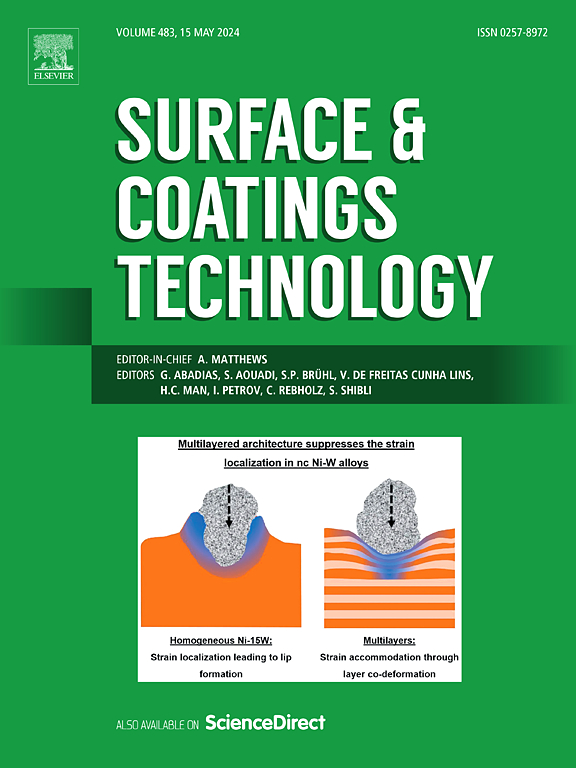Impact of non-uniform CMAS deposition and penetration on the performance degradation of a film-cooled vane with TBCs under a hot streak condition
IF 5.3
2区 材料科学
Q1 MATERIALS SCIENCE, COATINGS & FILMS
引用次数: 0
Abstract
This paper presents a model and computational method to analyze the impact of CMAS deposition and penetration on the aerodynamic performance, cooling efficiency, and stress evolution of a film-cooled turbine vane under a hot streak condition. The results indicate that the insulation effect of the deposit layer enhances the vane's cooling efficiency as it thickens, leading to reduced temperatures within the coating and a decreased CMAS penetration rate. However, CMAS penetration increases the thermal conductivity of the coating, thereby diminishing its insulation effectiveness. After 1500 h of deposition, the CMAS penetration coefficient decreases by 11.8 %, while the thermal conductivity of the top coat (TC) increases by 8.93 %. Cooling efficiency improves by 2.1 % after 1500 h due to deposition, but this effect diminishes to 1.06 % because of CMAS penetration. Additionally, the thermally grown oxide (TGO) increases from 1.0 μm to 1.729 μm after 1500 h, and further to 1.761 μm with CMAS penetration. CMAS penetration results in a maximum stress increase of 34 MPa in the TGO after 1500 h, indicating significant stress accumulation in the TGO, followed by the bond coat (BC) and top coat (TC).
求助全文
约1分钟内获得全文
求助全文
来源期刊

Surface & Coatings Technology
工程技术-材料科学:膜
CiteScore
10.00
自引率
11.10%
发文量
921
审稿时长
19 days
期刊介绍:
Surface and Coatings Technology is an international archival journal publishing scientific papers on significant developments in surface and interface engineering to modify and improve the surface properties of materials for protection in demanding contact conditions or aggressive environments, or for enhanced functional performance. Contributions range from original scientific articles concerned with fundamental and applied aspects of research or direct applications of metallic, inorganic, organic and composite coatings, to invited reviews of current technology in specific areas. Papers submitted to this journal are expected to be in line with the following aspects in processes, and properties/performance:
A. Processes: Physical and chemical vapour deposition techniques, thermal and plasma spraying, surface modification by directed energy techniques such as ion, electron and laser beams, thermo-chemical treatment, wet chemical and electrochemical processes such as plating, sol-gel coating, anodization, plasma electrolytic oxidation, etc., but excluding painting.
B. Properties/performance: friction performance, wear resistance (e.g., abrasion, erosion, fretting, etc), corrosion and oxidation resistance, thermal protection, diffusion resistance, hydrophilicity/hydrophobicity, and properties relevant to smart materials behaviour and enhanced multifunctional performance for environmental, energy and medical applications, but excluding device aspects.
 求助内容:
求助内容: 应助结果提醒方式:
应助结果提醒方式:


